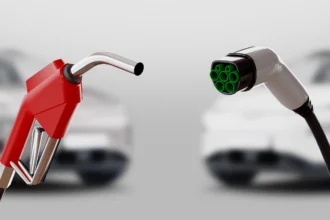The Convergence Era: AI as the Foundation of Global Transformation
The future of technology is not characterized by a single breakthrough but by the powerful, accelerating convergence of foundational technologies. Over the next five to ten years, innovation will move beyond simple digitization and into a phase of Intelligent Autonomy and Hyper-Specialization. Artificial Intelligence (AI) is no longer just a trend; it is the computational substrate that amplifies every other major development, driving unprecedented economic activity and societal change, particularly in high-value sectors like healthcare, finance, and industrial automation.
For investors, strategists, and business leaders, the focus must shift from merely adopting technology to understanding the intersections where AI meets quantum computing, synthetic biology, and autonomous systems. This is where the truly transformative and high-value innovations will emerge.
Pillar 1: The New Computing Frontier (AI, Quantum, and Edge)
The engines of the future economy are being fundamentally redesigned, moving toward vastly greater power and more intelligent distribution.
1. Agentic AI and Adaptive Systems
The dominant AI trend is the evolution from Generative AI (GenAI) to Agentic AI.
- What it is: Agentic AI refers to sophisticated software programs capable of making decisions, managing complex workflows, and taking actions autonomously based on high-level natural language instructions. They can self-correct, prioritize tasks, and execute multi-step processes across different platforms.
- The Transformation:
- Enterprise: Agentic AI is already streamlining complex tasks in customer service, sales automation (qualifying leads, booking meetings), and manufacturing (optimizing production schedules). This is driving a massive wave of workflow automation in back-office functions.
- Adaptive AI: A sub-trend is Adaptive AI, which constantly refines its models in real-time as new patterns emerge—crucial for fields like fraud detection and predictive healthcare, where threats and patient needs are constantly changing.
2. Quantum Computing and the Encryption Threat
Quantum computing remains a long-term, high-risk, high-reward investment, poised to disrupt multiple industries.
- The Potential: Quantum computers utilize the properties of quantum bits (qubits) to solve complex optimization problems (supply chains, logistics, financial modeling, drug discovery) that are currently intractable for the most powerful classical supercomputers.
- The Threat: The advancement of quantum computing poses a severe threat to current encryption methods (known as the “Quantum Threat”). Governments and corporations are urgently shifting towards Post-Quantum Cryptography (PQC)—new encryption algorithms designed to be safe from quantum attacks—creating a multi-billion dollar mandatory cybersecurity market shift.
- Synergy: The convergence of Quantum Computing and AI (Quantum Machine Learning) is expected to accelerate scientific discovery, particularly in materials science and pharmaceutical development.
3. Neuromorphic Computing and the Edge
To support the massive computational demands of AI, hardware is evolving to mimic the human brain.
- Neuromorphic Computing: This uses Spiking Neural Networks to process data more efficiently and adaptively, enabling AI to make better real-time decisions, particularly in autonomous vehicles and advanced robotics.
- Edge Computing: Processing power is moving from centralized data centers to the “Edge”—embedded in phones, cars, home systems, and industrial devices—enabling ultra-low latency applications crucial for real-time safety systems and connected IoT devices.
Pillar 2: The Biological and Material Revolution (Bioengineering & Space)
Technology is transforming our most fundamental needs: health, resources, and expansion beyond Earth.
1. Precision Medicine and Synthetic Biology
Biotechnology is shifting from broad treatments to hyper-personalized interventions.
- Precision Medicine: AI processes vast genomic data to tailor treatments, predicting outcomes and personalizing drug regimens. Innovations like CAR T-cell therapy for cancer and the use of mRNA-based therapeutics (like those used in vaccines) are expanding beyond infectious diseases to target genetic disorders and chronic illnesses.
- Synthetic Biology and Biomanufacturing: Researchers are designing and engineering biological systems for industrial use. This includes creating biofabricated materials, designing microorganisms for sustainable fuel production (biofuels), and developing superior biodegradable plastics (PHAs) to tackle the global waste crisis.
2. Commercial Space Technology and In-Orbit Manufacturing
Space has transitioned from a government mission to a commercial frontier driven by private capital.
- Space Biopharma: Microgravity offers unique conditions for crystal growth and cell culture that cannot be replicated on Earth. Companies are pioneering in-space pharmaceutical manufacturing, creating purer drug crystals and advanced materials to improve drug delivery systems, signaling a strong commercial revival in space biotech.
- Autonomous Systems: The development of reusable launch systems and advanced robotics is making space more accessible and commercially viable. Autonomous drones and robotics are being designed for on-orbit maintenance and resource extraction (in-situ resource utilization, ISRU), laying the groundwork for sustainable Moon and Mars missions.
- Global Connectivity: The massive deployment of low-Earth orbit (LEO) satellite constellations is achieving near-universal, high-speed internet access globally by 2030, closing the digital divide and enabling rapid data transfer for applications like real-time global logistics and remote healthcare.
Pillar 3: The Future of Work and Digital Trust
Innovation is reshaping human labor, organizational structures, and the digital safety net.
1. Transformation of the Global Workforce
Automation is causing a massive shift in required skills, demanding both technological and human-centric expertise.
- Job Displacement and Creation: AI-driven automation is expected to replace the equivalent of 300 million full-time jobs globally by 2030 (especially in clerical, data entry, and repetitive service roles). Simultaneously, it is fueling demand for high-growth roles in:
- Technology: AI/Machine Learning Specialists, Big Data Engineers, Fintech Engineers.
- Human-Centric/Care Economy: Nursing Professionals, Social Workers, Education roles.
- The Skills Imperative: Workers must embrace lifelong learning and acquire “T-shaped” skills: deep domain expertise complemented by critical soft skills like creative thinking, resilience, and flexibility. Over $13 trillion in global economic activity could be unlocked by 2030 through AI-driven productivity gains, but only if the workforce adapts.
2. Digital Trust, Governance, and Cybersecurity
As technology becomes more pervasive, the need for robust regulation and security is paramount.
- AI Governance Platforms: The rapid spread of AI necessitates standardized, ethical use. Governments (like the EU with its AI Act) are establishing legal frameworks. This drives demand for AI Governance Platforms that manage risks, ensure compliance, and provide Explainable AI (tools that show how an AI reached a decision).
- The Digital Immune System: Organizations are building comprehensive “Digital Immune Systems” using AI in Cybersecurity to rapidly detect, quarantine, and predict emerging threats. This includes automated threat hunting and applying Adaptive AI to constantly update defense models against new forms of cyber and disinformation warfare.
- The Gig Economy Infrastructure: The rise of independent workers requires specialized financial and compliance systems. Fintech is providing embedded financial infrastructure for marketplaces and gig platforms, ensuring seamless, compliant payment, verification, and benefits for the independent workforce.
Conclusion: A World Defined by Intelligent Autonomy
The coming years will see technology move from augmenting human capability to achieving Intelligent Autonomy—systems that can perceive, reason, decide, and act across physical and digital domains. The core challenge for humanity will not be a lack of innovation, but managing the ethical, regulatory, and societal pace of change.
The highest-value opportunities lie in the convergence of these pillars: combining AI with bioengineering for personalized medicine, linking quantum computing to cybersecurity for post-quantum defense, and using Agentic AI to manage the complexity of global space logistics. By understanding these tectonic shifts, we can ensure that this era of profound innovation transforms our world for the better.











